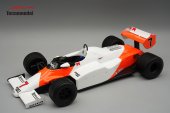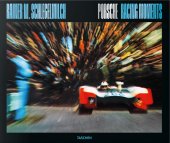COVER STORY
European Hillclimb Championship 1957–1969
The call of the mountains – The origins of the European Hillclimb Championship
Summiteers – The history of the European Hillclimb Championship from 1957 to 1959
The manufacturers go hillclimbing – 1960–1966:
The battleground for sports cars and GTs
Porsche's siblings rivalry – The 1967 European Hillclimb Championship
Hillclimb Cobra – The battle between Ford and Ferrari
Swan song – The 1968 and 1969 seasons – Porsche 909 and Ferrari 212 E
THE CALL OF THE MOUNTAINS
The origins of the European Hillclimb Championship
Hillclimbing has been a popular branch of motor racing in central Europe for more than a century, with the sport’s roots dating back to around 1900 – the very dawn of the automobile age.
The Paris–Rouen time trial in 1894 was the forerunner to modern rallying. The Paris–Bordeaux–Paris road race in 1895 paved the way for Grand Prix racing. And the very first hillclimb formed part of a race between Marseille and Nice on the 31st of January 1897. The third and final stage of that event was exactly 17 kilometres long, from Nice to the mountain village of La Turbie. The fastest entry in the field was a De-Dion steam car, driven by tyre manufacturer André Michelin who competed under the pseudonym ‘Pary’.
In 1899 there were three new hillclimbs, two of which were in Austria. First there was Exelberg, followed by Semmering. A then-25-year-old Ferdinand Porsche was a designer at the Jacob Lohner company in Vienna, which meant he was quickly exposed to hillclimbing. At the Exelberg event in 1901, he was a class winner in a Lohner-Porsche – helped by the fact that he was the only driver competing in an electric car. At the Semmering race, the electric category was won by Lohner factory driver Karl Paulal. Other big hillclimbs of the time included Gaillon in France (from 1899 onwards), Susa–Moncenisio in Italy and Mont Ventoux in France (both from 1902 onwards)…
by Martin Pfundner and Jörg-Thomas Födisch
Photographs: Porsche, Cahier
The Manufacturers go Hillclimbing
1960–1966: The battleground for sports cars and GTs
In its first three seasons, the new European Hillclimb Championship had proved popular with racing fans, who relished the chance to get much closer to the action than at most other motorsport events. Manufacturers like Ferrari and Abarth duly took notice, and began preparing their own works programmes to beat the dominant Porsches.
Despite the European Hillclimb Championship gaining momentum after its revival in 1957, organisers felt it was important to retain a level of relevance for privateers amid dwindling factory involvement. For 1960 the championship was split into two categories, one for GT cars and the official championship for sports cars. Swiss driver Heini Walter secured the sports car title in his Porsche 718 RSK and was therefore crowned champion, while Huschke von Hanstein dominated the GT class in a Porsche 356 Carrera.
The series was immensely popular in the Alpine regions, but for the sake of maintaining an upward trend, it was important to raise awareness in southern and central Europe. Ultimately, it all came down to marketing and prize money, but with only five championship rounds on the 1960 calendar, there wasn’t really enough of either.
On the plus side, the privateers who took part performed well, with Porsche, Maserati and Cooper fighting it out in the championship. At Mont Ventoux, Walter took victory ahead of Harry Zweifel and Sepp Greger. The best GT driver was Carlo Maria Abate in the Ferrari 250 GT. At the second race at Monte Bondone near Trento, the Italians had a home ground advantage. It was a win for Maserati, with Odoardo Govoni and Attilio Mennato Boffa finishing first and second in the new Tipo 60 Birdcage cars. Nino Vaccarella was third. The GT class was won by Ernesto Prinoth in the Porsche Carrera.
Alarm bells were ringing in Stuttgart, and Porsche decided to arm its star privateer Walter with a works version of the 1.7-litre car for the upcoming rounds. He promptly won the Schauinsland race, with Wolfgang Seidel winning the GT class. Walter also won the Swiss Mountain Grand Prix on the Ollon–Villars track from Boffa and young Swiss driver Tommy Spychiger – which decided the title in Walter’s favour. At the finale at Gaisberg, Porsche gave its works car to Greger, who was in with a shot of finishing second in the standings. It was a gamble well made, Greger winning from Walter and Zweifel. The final classification for the 1960 European Hillclimb Championship was Walter from Greger, Boffa and Zweifel. Von Hanstein won the GT Cup from Seidel and Abate…
by Karl-Heinz Peters, Jörg-Thomas Födisch and Thomas Nehlert
Photographs: Cahier, Porsche, Sammlung Peter Hoffmann, McKlein, Jutta Fausel
The jack-of-all-trades from Milan
Drivers who compete in single-seaters, sports cars and rallying are rare in the ultra-specialised motorsport world of today. In a career spanning three decades, Italian racer Carlo Facetti tasted success in all of these categories. And he embodies a type of racing driver that is pretty much extinct today: the tuner-mechanic who is also pretty good behind the wheel.
Carlo Facetti, born in Cormano on 26 June 1935, started working in his father’s tuning workshop, then did some motorcycle races and in his fifth car race found himself driving the Mille Miglia. He progressed to saloon and GT cars, became a works driver for Alfa Romeo and even tried his hand in Formula 1, before eventually founding his own company, developing cars like the Lancia Stratos and Ferrari silhouettes, and providing the engine for the Alba AR2 that won the Group C Junior Cup (later called Group C2 Cup) in the World Sportscar Championship.
A true jack-of-all-trades, Facetti competed in events like the Monte Carlo Rally, the exotic Gran Premio YPF and even the Temporada Argentina championship, while in between preparing engines and race cars for customers at the family officina back home in Bresso.
Actually, it was the work as a mechanic and tuner that gave him the opportunity to participate in races. Quite frequently, he was tasked not only with working on the cars of his customers, but with driving them as well. The Mille Miglia in 1956 were a typical example: a Fiat 1100/103 prepared by Officina Facetti was entered for Elio Zagato (yes, the famed designer) with Carlo Facetti as onboard mechanic. Zagato was not feeling very well, so he asked Carlo to drive – and this 21-year-old boy with just four races under his belt took the wheel in one of the most famous motor racing events of all time. He did a good job, too, racing on despite a crash. But after Rome had been passed, Carlo saw the Fiat 8V of one of his customers stranded on the side of the road. Heeding the words of his father – ‘Remember, Carlo, customers first!’ – he stopped to provide help. It was just an ignition cable, so both cars continued, the Fiat 8V even taking second place in its class. Around Florence another Facetti customer was desperately waiting for help, so Carlo had to stop again. In the end, he took fifth place in his class – a fine result considering he hadn’t even expected to take part in the event. He drove quite a few impromptu races like that over the years…
by Ugo Vicenzi
Photographs: McKlein, Archiv Facetti, Motorsportimages
The one-make legend
This year, the Norisring once again came to life through painstaking work. The 2.3-kilometre circuit requires seven kilometres of barriers and 10,000 working hours from the team at the Motorsport Club Nürnberg. The expectation was a 130,000-strong crowd, who this year weren’t just trying to get a glimpse of the DTM stars on the ‘Franconian Monaco’ – 39 years after the last Procar race at the Norisring, a total of 14 BMW M1s turned out to celebrate the ‘Procar Revival’. All three drivers who finished on the podium at the 1980 Procar race in Nuremberg were there: Hans-Joachim Stuck, Jan Lammers and Marc Surer. Another special guest was Jochen Neerpasch, one of the Procar founding fathers.
Having a direct comparison between the four-decade-old M1s and the modern DTM machinery led to some wistful reminiscing from the old guard. ‘Back then we had a lot less electronics in the car and no telemetry – that meant much more freedom for us drivers,’ says Surer. ‘We weren’t an open book like today’s drivers are. You couldn’t see and analyse every mistake from the outside. When you came back to the pits and said this or that had happened, the team couldn’t necessarily prove you wrong. Everything was based on trust. It’s different today.’
Surer adds that there are other factors that have stripped modern drivers of their independence: ‘There were fewer penalties and interventions from race control. You weren’t penalised unless you really misbehaved. Today there are penalties galore and the race engineer tells you how to drive the car – it’s an unimaginable situation for us old racers. The driver doesn’t decide for himself any more, and he doesn’t drive against the other drivers. Instead, he has his race engineer behind him, and they are taking on the other drivers and engineers. An engineer would never be able to drive a car like this. Nonetheless, he comes straight out of university and then tells the driver how to drive a modern racing car.’
The Hot Seat
Looking back at his time in the cockpit of the M1, there’s one thing that stands out for former F1 driver Surer. ‘Driving the car wasn’t that difficult in itself, but it very quickly got very hot in the cockpit,’ he recalls. ‘I remember drivers like Alan Jones regularly complaining about the heat. The guys coming out of a Formula 1 cockpit weren’t used to it…
by Robert Weber
Photographs: BMW Classic/Hardy Mutschler
- Luca di Montezemolo on Niki Lauda
- Eckhard Schimpf about the Jägermeister BMW 320 Turbo
- Emanuele Pirro about his endurance racing debut
- Back on Track De Tomaso Pantera Ford 351 Gr. 5
- and many more!




